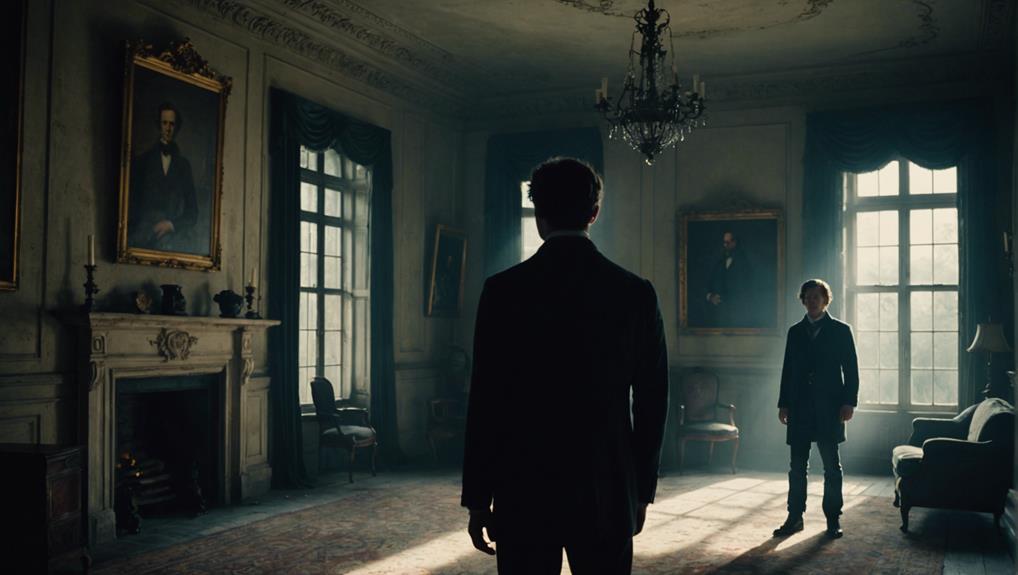When revisiting 'Great Expectations' by Charles Dickens, you'll uncover a rich narrative that explores societal critiques, intricate character developments, and timeless themes. Characters like Pip and Miss Havisham embody class struggles and moral growth, while themes of love and ambition intertwine with a cautionary tale. Dickens' storytelling captivates with its narrative style, immersing you in Victorian society's complexities. Despite some criticisms, the novel's enduring relevance prompts reflection on modern inequality and relationship intricacies. This exploration hints at a deeper understanding of the human condition and societal expectations.
Historical Context of 'Great Expectations'
Examining the historical context of 'Great Expectations' sheds light on the societal influences that shaped Charles Dickens' narrative. Miss Havisham, a key character in the novel, embodies the decaying aristocracy of the Victorian era. Dickens uses Miss Havisham to critique the obsession with social status and the detrimental effects of living in the past. Her character reflects the rigid class structures and expectations prevalent during that time.
Through Miss Havisham, Dickens highlights the consequences of societal pressures and the consequences of embracing bitterness and revenge. Her character serves as a cautionary tale, illustrating the destructive nature of clinging to past grievances and allowing them to consume one's life.
Analysis of Major Characters
The major characters in 'Great Expectations' play an essential role in the moral development and narrative progression of the novel. Dickens masterfully crafts characters that not only drive the plot forward but also serve as vessels for deeper themes and reflections on human nature.
Immerse yourself in the intricate web of character analysis with these poignant observations:
- Pip undergoes a profound moral transformation, showcasing the essence of growth and self-realization.
- Miss Havisham's vengeful expectations for Estella illuminate the destructive power of bitterness and resentment.
- Wemmick's contrasting personas highlight the internal struggles individuals face when dealing with societal expectations.
- Characters like Biddy and Pip embody the complexities of humanity, portraying both flaws and resilience in the face of adversity.
Through his characters, Dickens weaves a tapestry of emotions and experiences that resonate with readers on a profound level, making 'Great Expectations' a timeless exploration of the human condition.
Themes of Love and Ambition
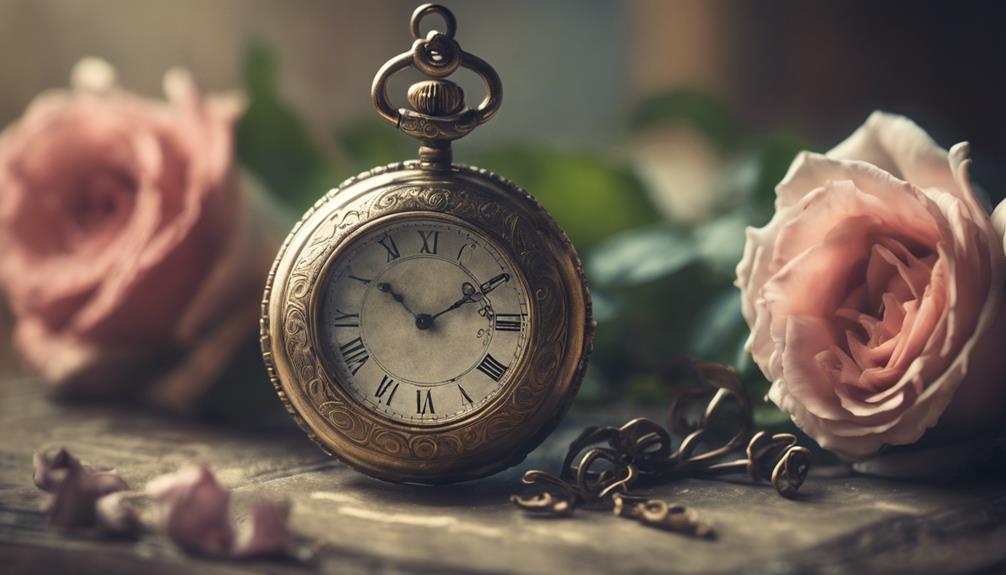
Explore how 'Great Expectations' intertwines the transformative power of love with the dark consequences of ambition, shedding light on the dual nature of human desires. From Pip's unfulfilled yearning for Estella to his relentless pursuit of social advancement, the novel navigates the complexities of these fundamental themes with depth and nuance.
As you journey through the highs and lows of Pip's emotional and aspirational quest, reflect on how Dickens masterfully weaves together the intricate tapestry of love and ambition in this timeless classic.
Love's Transformative Power
Love's transformative power in 'Great Expectations' profoundly shapes the characters' ambitions and moral development. Miss Havisham's tragic love story with Compeyson serves as a cautionary tale for Pip and Estella, influencing their perspectives on love and ambition.
As you explore the depths of this theme, you witness the following:
- Pip's infatuation with the unattainable Estella fuels his aspirations for a higher social status, showcasing the all-consuming nature of love's influence on ambition.
- Estella's upbringing under Miss Havisham's manipulation demonstrates how a lack of genuine love can lead to a distorted sense of self and purpose.
- The parallel between Miss Havisham's heartbreak and Pip's longing for Estella highlights the enduring impact of lost love on one's character and choices.
- Through Pip and Estella's tumultuous relationship, Dickens masterfully illustrates the tumultuous journey of self-discovery and moral growth that love can catalyze in individuals.
Ambition's Dark Consequences
Pip's unchecked ambition in 'Great Expectations' leads him down a path of moral degradation intertwined with the pursuit of love and social status. His aspirations for higher social standing and the affections of Estella drive him to make questionable choices that ultimately harm his relationships.
Pip's relationship with Joe, his humble brother-in-law, suffers as Pip becomes ashamed of Joe's simple ways, highlighting the negative impact of ambition on personal connections. Additionally, Pip's infatuation with Estella, whom he views as a symbol of high society, blinds him to the genuine love and care offered by others, such as Biddy.
This unbalanced focus on achieving societal expectations through Estella's love leads Pip to neglect the people who truly care for him, showcasing the dark consequences of ambition when intertwined with relationships. Dickens uses Pip's journey to caution readers about the dangers of prioritizing ambition over genuine human connections and personal growth.
Dual Nature of Desires
In the intricate web of desires within 'Great Expectations,' the interplay between love and ambition illuminates the characters' paths towards self-discovery and moral reckoning.
Pip's relationship with Estella serves as a poignant example of the complexities that arise when love and ambition collide.
- Pip's unrequited love for Estella tugs at your heartstrings, showcasing the yearning for affection amidst societal expectations.
- The internal conflict Pip faces between his affection for Estella and his aspirations for a better life resonates with the struggle to balance personal desires.
- Estella's aloof demeanor and internal battles reflect the inner turmoil caused by conflicting views on love and ambition.
- The ultimate resolution of Pip's relationship with Estella leaves a bittersweet taste, underscoring the sacrifices made in the pursuit of one's desires.
Through Pip and Estella's intertwined journey, Dickens skillfully explores the intricate dance between love and ambition, shedding light on the profound effects these desires have on the characters' lives.
Examination of Social Class
Social class in 'Great Expectations' serves as a central theme, shaping characters' experiences and interactions throughout the novel.
The distinctions between the upper and lower classes are starkly depicted, influencing how characters like Pip navigate their relationships and aspirations.
Pip's transformation from a humble blacksmith's apprentice to a gentleman illustrates the theme of social mobility and the challenges that come with transcending class boundaries.
Characters such as Estella and Miss Havisham embody the privileged upper class, highlighting their disdain towards individuals of lower social status.
Dickens uses these characterizations to critique the rigid Victorian social hierarchy and its effects on personal identity and moral values.
Through examining the disparities in wealth and status, the novel explores how societal expectations based on class can impact one's opportunities and self-worth.
Ultimately, 'Great Expectations' offers a profound exploration of how social class shapes individuals' lives and interactions in Victorian society.
Dickens' Narrative Style
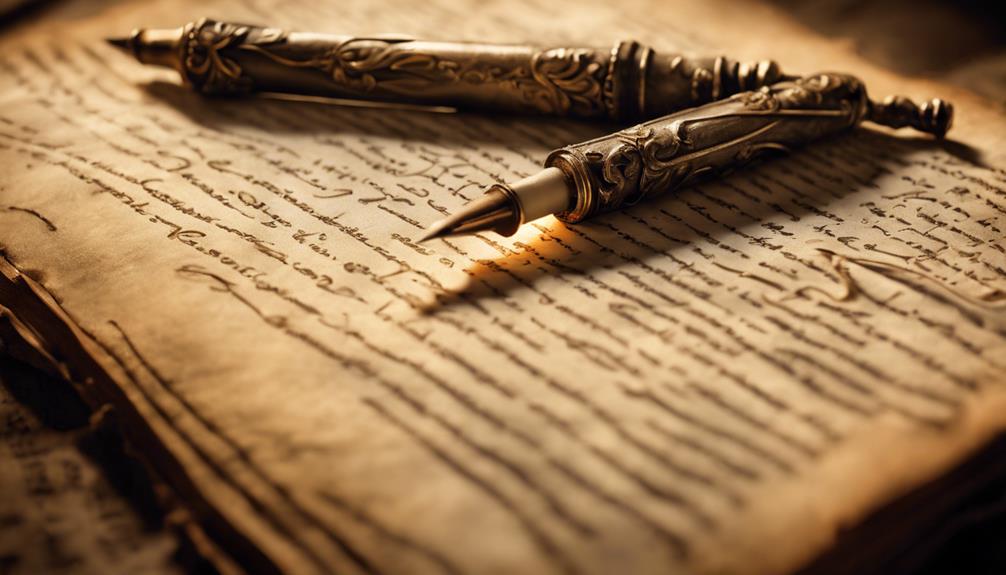
Within 'Great Expectations', Dickens' narrative style captivates readers through its seamless blend of plot progression and character development. His storytelling in the novel effortlessly weaves together the intricate lives of characters in Victorian England, drawing readers into a world filled with ambition, love, and social class dynamics.
The natural flow of Dickens' narrative style avoids excessive melodrama, allowing for a deeper exploration of themes that resonate with readers even today.
- Dickens' ability to develop characters with depth and complexity evokes empathy and understanding.
- The cohesive narrative structure in 'Great Expectations' keeps readers engaged without feeling overwhelmed.
- The seamless blend of plot progression and character development showcases Dickens' storytelling prowess.
Through his narrative style, Dickens masterfully captures the essence of Victorian England, immersing readers in a world of societal norms and personal aspirations.
Impact of 'Great Expectations' on Literature
You can explore the lasting impact of 'Great Expectations' on literature through an analysis of its literary influence, evolution of genres, and examination of character development.
The novel's profound themes and portrayal of human nature have shaped the way authors approach storytelling.
Literary Influence Analysis
The profound impact of 'Great Expectations' on literature is evident through its enduring influence on subsequent works and authors. Dickens' novel has left an indelible mark on the literary world, shaping the way stories are told and characters are developed.
Consider the following emotional responses to the novel's influence:
- Inspiration: Writers continue to draw inspiration from the themes and characters in 'Great Expectations', infusing their own works with the same depth and complexity.
- Reflection: Readers often find themselves reflecting on their own ambitions, societal roles, and personal growth after engaging with the novel.
- Connection: The universal themes in 'Great Expectations' create a profound connection between readers of different backgrounds and experiences.
- Legacy: Dickens' storytelling legacy lives on through the countless adaptations and retellings of 'Great Expectations', ensuring that its impact endures for generations to come.
Genre Evolution Exploration
The impact of 'Great Expectations' on the evolution of literature is profound and far-reaching, shaping subsequent works and influencing the development of the genre. Dickens' intricate plot points, such as Pip's journey of self-discovery, the mystery surrounding Miss Havisham, and the themes of social mobility and identity, have become benchmarks for narrative complexity and depth in literature.
The novel's intricate web of interconnected storylines and characters has set a high standard for storytelling in the genre, inspiring future writers to craft narratives with similar layers of depth and meaning.
Furthermore, 'Great Expectations' challenged conventional plot structures of its time by intertwining elements of mystery, romance, and social commentary seamlessly. This blending of genres within a single narrative has since become a common technique used by authors seeking to engage readers on multiple levels.
The enduring appeal of 'Great Expectations' lies not only in its engaging plot twists but also in its ability to provoke introspection and contemplation on the complexities of human existence.
Character Development Examination
Dickens' masterful character development in 'Great Expectations' has left an indelible mark on the landscape of literature, influencing subsequent works with its portrayal of moral growth and transformation.
When examining the characters in the novel, particularly Miss Havisham, one can't help but feel a sense of tragic loss and missed opportunities. The evolution of Pip's character evokes empathy and introspection, making readers reflect on their own personal growth journeys.
The intricate relationships crafted by Dickens, such as the dynamic between Pip and Wemmick, tug at the heartstrings, showcasing the power of human connection in shaping one's identity.
The nuanced development of characters like Miss Havisham serves as a poignant reminder of the consequences of holding onto the past and the importance of forgiveness in the journey towards redemption.
Through the lens of character development, 'Great Expectations' continues to resonate with audiences, highlighting the timeless themes of growth, transformation, and the enduring impact of interpersonal relationships.
Critiques of the Novel
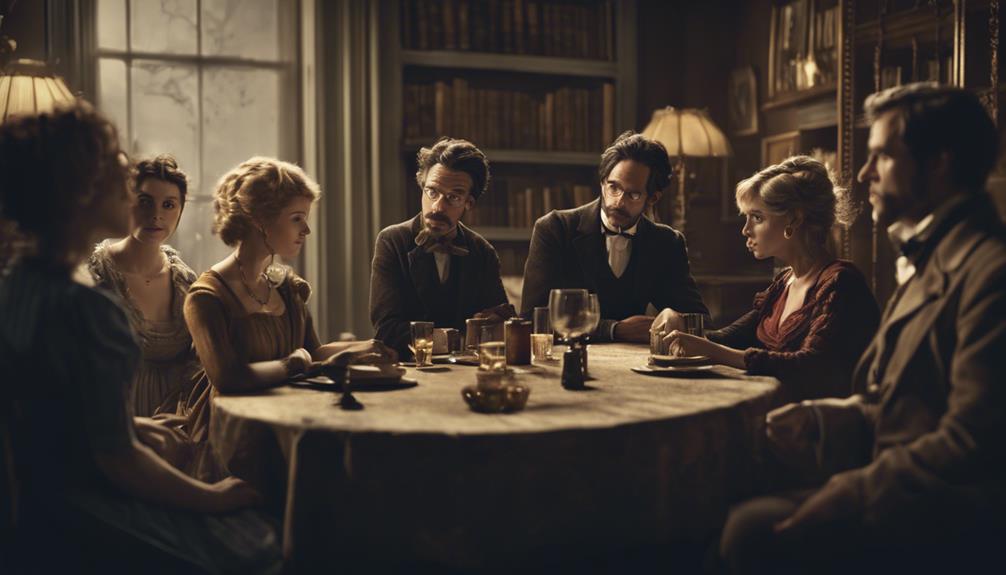
Critics have raised concerns about the rushed and unsatisfactory ending of 'Great Expectations'. Some argue that the novel's conclusion feels abrupt and overly tidy, failing to provide a satisfying resolution to the complexities of the plot.
The quick reconciliation between Pip and Estella has been particularly contentious, with some finding it unrealistic given the tumultuous nature of their relationship throughout the story. While the happy ending may tie up loose ends, it has been criticized for lacking the emotional depth and nuance present in the rest of the narrative.
On the other hand, defenders of the novel suggest that the unresolved tension between Pip and Estella adds a layer of realism and complexity to their characters, reflecting the intricacies of human relationships. Despite these critiques, 'Great Expectations' continues to be praised for its timeless exploration of the human condition and remains a classic in the literary canon.
Modern Relevance of the Themes
In today's society, the themes of love, ambition, and social class in 'Great Expectations' continue to resonate deeply with readers. Dickens' exploration of human nature and societal expectations in the novel remains relevant, offering valuable insights for contemporary readers like yourself.
The moral lessons and character development within the story provide a mirror to reflect on personal growth and forgiveness in your own life.
- The disparities between social classes depicted in the novel prompt reflection on inequality today.
- The pursuit of ambition and the consequences of blind ambition are cautionary tales for individuals striving for success.
- The complexities of relationships and the different forms of love portrayed in 'Great Expectations' mirror the intricacies of modern relationships.
- The struggles for personal identity and the effects of societal expectations on individuals are themes that still resonate strongly, prompting introspection on your own sense of self.
Conclusion: Dickens' Lasting Legacy
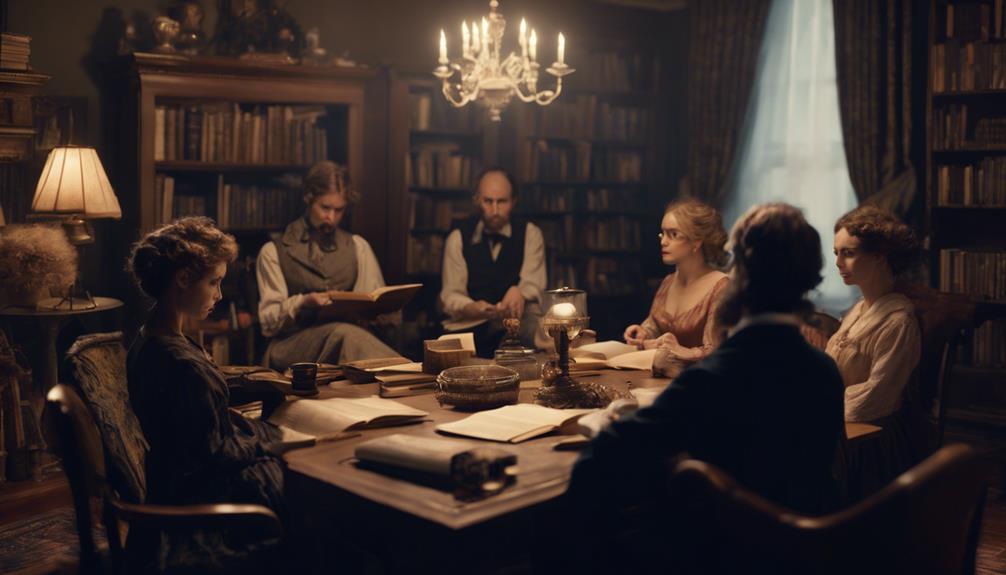
As readers continue to engage with 'Great Expectations,' Dickens' legacy endures through the timeless themes and profound societal insights woven into the narrative.
When you look back at the impact of Dickens' work, it's evident that his exploration of love, ambition, and social class still strikes a chord with audiences worldwide.
Despite some criticisms of the ending, the complex relationship between Pip and Estella adds a layer of depth and realism that lingers in readers' minds.
Even with deviations, like in the 1998 movie adaptation, the enduring power of Dickens' storytelling shines through, showcasing the lasting impact of his work.
Libraries brim with analyses of Dickens' narratives, emphasizing his ability to transcend time and captivate generations with his astute observations of human nature and society.
Dickens' legacy is one that continues to shape the literary landscape, cementing his place as a master storyteller whose influence shows no signs of waning.
Conclusion
As you reflect on the timeless themes and complex characters of 'Great Expectations,' it's clear that Charles Dickens' legacy continues to captivate readers.
Like a tapestry woven with threads of love, ambition, and social class, the novel remains a vivid portrait of Victorian society.
With its profound impact on literature and modern relevance, 'Great Expectations' stands as a literary masterpiece that will forever endure in the hearts of readers.

